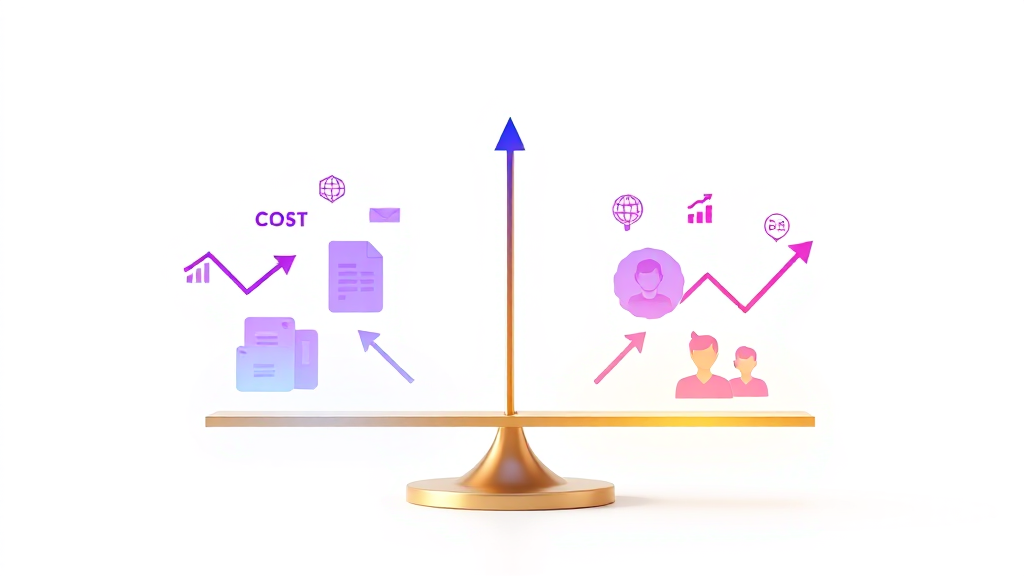Cost Analysis of Repurchase Plan Tools: A Comprehensive Guide

For a deeper dive, see our
.
Visual representation of the ROI from repurchase plan tools in MLM software, balancing costs against significant business growth opportunities.
Introduction
In today's competitive market, businesses are constantly seeking ways to streamline operations and maximize efficiency. One tool that has gained significant traction in recent years is the repurchase plan system. These systems automate the process of managing and tracking customer purchases, ensuring businesses can maintain customer retention and drive sales without manual intervention.
But with so many options available, understanding the cost implications of implementing a repurchase plan system can be overwhelming. This guide aims to provide a detailed analysis of the costs associated with repurchase plan tools, helping businesses make informed decisions about their implementation.
Understanding Repurchase Plan Tools
What Are Repurchase Plan Tools?
Repurchase plan tools are software solutions designed to automate and manage the process of creating and tracking customer purchase plans. These systems allow businesses to set up recurring orders for products or services, send reminders to customers, and track purchase history in a centralized location.
Why Implement Repurchase Plan Tools?
The benefits of implementing repurchase plan tools are numerous:
-
Improved Customer Retention:
By automating the process of sending purchase reminders, businesses can keep their customers engaged and reduce churn rates.
-
Increased Sales:
Repurchase plans help businesses identify cross-selling and upselling opportunities, leading to increased sales.
-
Efficiency Gains:
Automating manual processes reduces the time spent on tracking purchases and managing customer relationships.
Factors Affecting Implementation Costs
1. Business Size
The cost of implementing repurchase plan tools can vary significantly depending on the size of the business. Smaller businesses may require simpler solutions, while larger enterprises may need more complex systems with advanced features.
2. Complexity of Plans
The complexity of the repurchase plans you want to implement will also impact the cost. Simple plans with basic automation may be cheaper, but more intricate plans with advanced analytics and customization will come at a higher price.
3. Integration Needs
If your business already has existing systems in place, such as CRM or ERP software, the cost of integrating repurchase plan tools can increase. Custom integration may be required to ensure seamless compatibility.
4. Additional Features
Some repurchase plan tools offer additional features like AI-powered analytics, predictive modeling, and advanced reporting. While these features can provide significant value, they also add to the overall cost of implementation.
Evaluating Repurchase Plan Implementation Costs
Subscription-Based Models
Many repurchase plan tools operate on a subscription-based model. The cost of these subscriptions can vary widely depending on the provider and the level of service you require. It's important to carefully evaluate the features included in each plan and determine which one best meets your business needs.
One-Time Purchase vs. Subscription
Some repurchase plan tools may offer a one-time purchase option, while others stick strictly to subscription-based pricing. Businesses should consider their long-term goals and budget when deciding between these two models.
Custom Pricing Options
For businesses with unique requirements or larger operations, custom pricing options may be available. These can include tailored solutions that are designed specifically for your business needs, but they often come at a premium cost.
The Total Cost of Ownership (TCO)
When evaluating the cost of repurchase plan tools, it's important to consider more than just the initial implementation cost. The total cost of ownership (TCO) includes:
-
Licensing Fees:
Ongoing fees for using the software.
-
Subscription Costs:
If applicable, recurring subscription fees.
-
Training Expenses:
Costs associated with training employees on how to use the system.
-
Maintenance and Support:
Ongoing costs for maintenance and technical support.
Making an Informed Decision
Define Your Goals
Before implementing a repurchase plan tool, it's crucial to clearly define your business goals. Understanding what you want to achieve will help you identify the features you need and avoid overspending on unnecessary features.
Assess Current Processes
Evaluate your current processes for managing customer purchases and identify areas where automation can provide the most value. This assessment will help you determine which repurchase plan tool is best suited to your needs.
Choose a Vendor Wisely
When selecting a vendor, look for one with a strong track record and positive reviews. Consider requesting demos or trials to get a firsthand look at how the tools work and whether they meet your requirements.
Negotiate Terms
If possible, negotiate terms with vendors to secure the best possible pricing. Many providers are willing to offer discounts for long-term commitments or volume-based pricing.
Conclusion
Ready to take the next step?
.
Implementing repurchase plan tools can be a valuable investment for businesses looking to improve customer retention, drive sales, and streamline operations. However, it's important to carefully evaluate the costs associated with these systems and choose a solution that aligns with your business goals and budget.
By understanding the factors that influence implementation costs and considering the total cost of ownership, businesses can make informed decisions that maximize their return on investment. Whether you're a small business or a large enterprise, there's a repurchase plan tool out there that can help you achieve your objectives while staying within your budget constraints.
Related Articles
Why MLM Software Development is Critical for Modern Businesses: A Comprehensive Guide
Discover why MLM software development is crucial for modern businesses. Learn how bespoke solutions can streamline operations, boost efficiency, and drive profi
Why Custom MLM Software Development is Essential for Business Growth
Here is a concise and compelling SEO meta description for the blog post: Discover why custom MLM software development is crucial for business growth. Learn how
Portfolio Management in MLM Software: Streamlining Success
Streamline your MLM business with AI-powered portfolio management. Discover how to drive growth and efficiency in our comprehensive guide, featuring expert insi